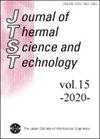用于分析SiC单晶顶种溶液生长中输运现象的可解释机器学习
IF 0.9
4区 工程技术
Q3 THERMODYNAMICS
引用次数: 5
摘要
碳化硅(SiC)是一种用于供电和控制电源的功率半导体。顶种溶液生长法(TSSG)是一种很有前途的制备高质量SiC单晶的技术。然而,为了在这种生长技术中实现高且均匀的生长速率,必须很好地控制生长熔体/溶液中主要由感应加热线圈的电磁场、自由表面张力梯度和浮力引起的复杂流体流动。我们之前的研究表明,应用静态磁场和种子旋转可以有效地控制熔体流动的成分,并使用贝叶斯优化方法有效地优化了相关的控制参数。在本研究中,我们更详细地分析了由贝叶斯优化确定的最优状态,发现Marangoni流在种子边缘附近的分离导致生长速率不均匀。此外,利用基于卷积神经网络的可解释机器学习技术和SmoothGrad获得的灵敏度图确定熔体流动的最敏感区域。这种机器学习技术自动预测优选的熔体流动模式,从而导致高质量的晶体生长。本研究中使用的可解释机器学习技术的解释与先前对TSSG方法进行优化的研究一致。本文章由计算机程序翻译,如有差异,请以英文原文为准。
Explainable machine learning for the analysis of transport phenomena in top-seeded solution growth of SiC single crystal
Silicon carbide (SiC) is a power semiconductor used to supply and control the electric power source. Top-Seeded Solution Growth (TSSG) method is a promising technique for producing high-quality SiC single crystals. In order to achieve a highand uniform-growth rate in this growth technique, however, the complex fluid flow developing in the growth melt/solution, mainly induced by the electromagnetic field of the induction-heating coils, free surface tension gradient, and buoyancy, must be well-controlled. Our previous studies have shown that the applications of a static magnetic field and seed rotation are effective in controlling the components of this melt flow and the associated control parameters were optimized effectively using the Bayesian optimization. In this study, we analyze the optimal state determined by the Bayesian optimization in more detail and it is found that the separation of the Marangoni flow near the seed edge leads to a non-uniform growth rate. In addition, the most sensitive region of the melt flow is determined by using an explainable machine learning technique based on a convolutional neural network and the sensitivity map obtained by SmoothGrad. This machine learning technique automatically predicts the preferred melt flow pattern that would lead to high-quality crystal growth. The interpretations by the explainable machine learning technique used in the present study are consistent with those of previous studies carried out on the optimization of the TSSG method.
求助全文
通过发布文献求助,成功后即可免费获取论文全文。
去求助
来源期刊
CiteScore
2.30
自引率
8.30%
发文量
0
审稿时长
5 months
期刊介绍:
JTST covers a variety of fields in thermal engineering including heat and mass transfer, thermodynamics, combustion, bio-heat transfer, micro- and macro-scale transport phenomena and practical thermal problems in industrial applications.

 求助内容:
求助内容: 应助结果提醒方式:
应助结果提醒方式:


